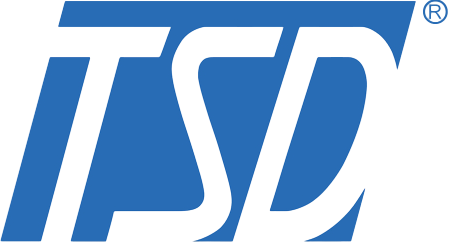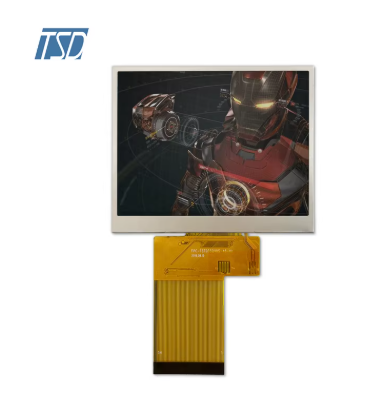Understanding TFT LCD Screen Resolution Basics
What Is TFT LCD Screen Resolution?
Resolution The TFT (LCD) screen resolution is the width by height in pixels that the video system on the screen is designed to ESOLUTION work at. For instance, a 1920x1080 resolution indicates the width has 1920 pixels and the height has 1080 pixels. The resolution is key to both how well the user can see what's on the screen, and how nice it looks. Higher resolution displayHigh-resolution screen has more pixels, and can provide clearer and more realistic images. This is particularly important for applications that require accuracy, such as medical imaging and graphic design.
Pixel Density and Visual Clarity
Pixel density (PPI) is a measurement of a screen's resolution, expressed as the number of pixels per inch on the screen. It is the number of pixels found on an inch of the screen, the higher the pixel density the sharper and more detailed are the information shown on the screen. When it comes to smartphones or tablets, more pixels equals clarity in visuals. For example, industry guidelines recommend a pixel resolution of approximately 300 PPI for smartphones in order to achieve clear display quality, whereas for televisions 50-100 PPI is a suffi-cient resolution because of the distance to the screen. This difference reflects the necessity of adequate selection of the pixel resolution depending on the type of device and usage condition.
Common Resolution Standards (HD, FHD, QHD)
Frequents of commonly used resolutions are HD(1280x720), FHD(1920x1080) and QHD(2560x1440). HD is good for basic web and video playing and some general task, it also lies in between clarity and power saving. FHD has improved image detail, when more detail is needed to be source out, for streaming, gaming, digital art/ image editing. QHD is higher resolution and further pixel density, for professional graphic design and extreme image detail. The trend is for greater resolution content such as 4k content which has interesting ramifications for the future of technology as well as enhancing user experiences in a multitude of applications from serious gaming rigs to high-res displays for professional creative work.
Key Factors in Choosing TFT LCD Resolution
Application-Specific Requirements
The resolution requirement for different applications is very different, which has had a great influence on the selection of TFT-LCD screen. For applications like gameplay and medical imaging, it is particularly important to have high resolutions for accuracy and precision. For example, in medical imaging, the resolution has to be fine enough to lead to accurate diagnosis, which is supported by studies in healthcare technology. Design work also benefits from having higher resoluton screens to work on for detailed design of work ingredients." Strictures imposed by regulators in sectors such as healthcare may specify the minimum resolution required to ensure reliability and effectiveness in displays deployed in life critical applications. So, it is important to know application specific requirements to select the correct resolution for your display.
Screen Size vs. Viewing Distance
The size of the screen and the viewing distance have a strong influence on the choice of resolution. Resolution needed for viewing the screen is proportional to the size of the image projected, with higher resolution images projected at larger sizes requiring higher resolution than images projected smaller. According to the criteria of the Viewing condition to select the resolution, with the increase of the screen size or the decrease of viewing distance, the pixel size would increase and consequently users could feel more uncomfortable, it is a factor to against Image pixelation as well. Another field in surveys which could be supported by this paper is the involvement of users, as well as screen resolutions that meet different types of viewing environments to achieve visual quality and prevent visual fatigue.
Content Type and Usage Environment
The content on the TFT LCD screen plays an important role on the selection of resolutions, graphics content will require a higher resolution than simple text. This is necessary for enabling unambiguous interpretation. It's also a resolution thing for the usage environment; bright office vs. dim room and have the perfect resolution settings for the amount of ambient light and I'm golden. For example, meetings rooms might want higher resolution displays to bring out the fine print of information in presentations, while trade show displays could require high resolution to draw attention and stop large crowds. By combining all of these factors, the desired appearance is achieved in multiple situations.
TFT LCD vs. Other Display Technologies
Resolution Trade-offs: OLED and LED Comparisons
In comparison with OLED and LED technologies, the ability of TFT LCD to have resolutions and performance stands out to be very important. TFT LCDs have a good trade-off relationship between resolution and cost, and are thus widely used. OLED displays, meanwhile, tend to offer superior color accuracy owing to their organic light-emitting makeup, even if they fall short in the brightness and longevitiy department. This can be important where the use of the display is extended, such as a professional or industrial use. Many 'specialist' display manufacturers will tell you that although OLED can give a 'pretty' picture they use TFT LCD because it's a more stable long term display technology. LED displays tend to fall somewhere in the middle, performing well across a range of metrics but never reaching the kind of color fidelity of OLED.
Power Consumption and Response Time Considerations
Resolution has a big impact on power consumption because higher resolutions require more power to drive more pixels, which can affect battery life in devices that run on battery. For battery-operated equipment, it is important to guarantee the minimum resolution without drawing too much power. TFT LCD's are often more energy efficient than OLED in static light, helping to extend battery life. Response time is another aspect, with TFT LCDs and LEDs usually able to provide faster response times than OLED, for smoother transition effects and minimal motion blur in fast-action applications like gaming. Industry reports commonly show that the average acceptable level of power consumption is below that of TFT LCD displays, and for environmentally conscious businesses they are often the natural choice. Some other expert comments also typically point out the practical middle of the road TFT LCDs get to, in power requirement versus response.
Optimizing Resolution for Different Use Cases
Industrial/Medical Displays: Precision Needs
Industrial and medic display s has particular demand for very high resolutions because of the life and death seriousness of the applications. The clarity high resolution displays offer are crucial in applications like medical operating rooms or control panels on manufacturing equipment where precision and dependability are of the utmost importance. The latest developments in TFT LCD technology are specifically targeted towards these markets to provide them with improved reliability and higher resolution for accurate operation. The monitors such as surgical monitors require different resolutions for displaying fine details during an operation and the controls panels for displaying high-resolution for interpreting data accurately. These enhancements not only provide for more efficient operation but they enhance the user experience.
Consumer Electronics: Balancing Cost and Performance
Balancing high quality high definition visuals with production cost is a constant tug-of-war in consumer electronics. Manufacturers must trade off on consumer preference for high resolution with cost and consumption in their products. Market trends show that consumers are demanding richer and higher-definition images, with many often prioritising visual performance for their smartphones, tablets and television sets. In order to meet high demands without increasing the cost of display devices, producers focus on the production process and materials of display technologies. Consumer electronics sales are increasingly consistently, and in particular in competitive resolution products at affordable prices. This balance of cost and performance enables consumer desire to be met and companies to stay in business.
FAQ
What does TFT LCD resolution mean?
TFT LCD resolution refers to the number of pixels displayed on the screen, usually expressed as width by height, affecting image quality and detail.
Why is pixel density important in screens?
Pixel density, measured in pixels per inch (PPI), is crucial for sharper images and text, influencing visual clarity, especially in devices like smartphones.
How do viewing distance and screen size affect resolution choice?
Larger screens need higher resolutions when viewed from a distance to maintain clarity, whereas smaller screens can use lower resolutions without affecting quality.
How does resolution affect power consumption?
Higher resolutions increase power usage due to the additional pixels that need lighting, impacting battery life in portable devices.




